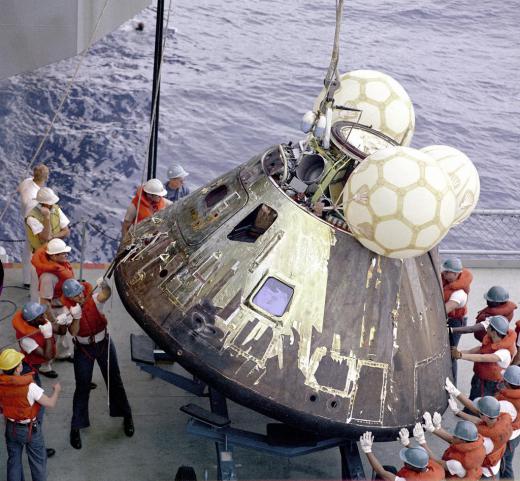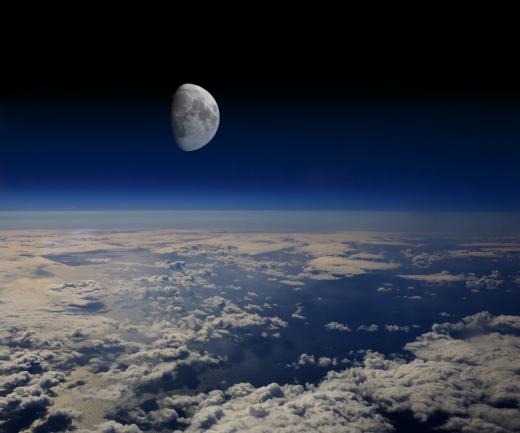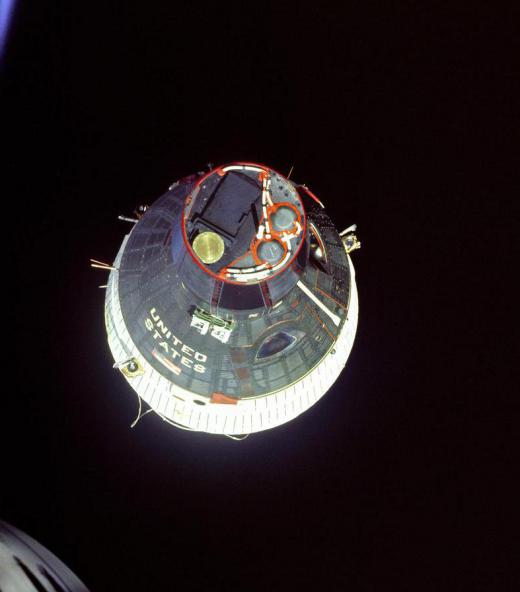What Was Apollo 13?
 Tricia Christensen
Tricia Christensen
The Apollo 13 Mission is perhaps best known today because of the very popular and mostly accurate 1995 film Apollo 13. The movie, featuring Tom Hanks, Bill Paxton, Kevin Bacon, and Ed Harris, documents the story of the near disastrous attempted mission to the moon that surprisingly did not end with the death of astronauts, Jim Lovell, John Swigert, and Fred Haise. Instead, the exceptional planning, intelligence and the ability of the astronauts and the ground crew to think quickly brought these very brave gentleman home after significant malfunctions occurred on the command module of the Apollo spacecraft.
With Americans still so excited about the first landing on the moon, NASA quickly planned several other missions to land on and explore the moon. Apollo 13 would have been the third mission to accomplish a lunar landing, if not for extremely hazardous technical difficulties. One of these, the explosion of one of the two main oxygen tanks, is well known. This occurred suddenly and without warning during a routine procedure called stirring the oxygen tanks, a standard process and test to keep the oxygen stable at higher levels of atmospheric pressure and cooler temperatures.

The other malfunction on the Apollo 13 ship occurred just a few minutes into liftoff. The center engine cut out two minutes before the end of a planned burn of fuel, and the crew had to rely on several other engines to get to the appropriate distance needed. This first technical difficulty was not a significant factor in the later events of the oxygen tank explosion, but it did help NASA later develop a better plan for design of the engine, since it could have presented significant problems.

The larger issue of the explosion of the oxygen tank, which helped to power the command module, was the greatest concern. Considerable fear existed that the Apollo 13 crew would run out of oxygen, by relying on the Lunar Module (LM) part of the spacecraft. The LM was only designed for two people, and one of the early problems encountered after the oxygen tank explosion was that the LM could not adequately filter carbon dioxide for three people. Exceptional ingenuity of the ground crew enabled the astronauts to create a better filter with materials available on the ship.

Since the oxygen tank explosion had affected power to the spacecraft, the second and major issue was how to safely get the astronauts home. The moon landing was scrapped, and the ground crew figured a way for the ship to use the moon’s gravity through a single rotation around the moon to slingshot the ship earthward, in what is called a free return trajectory. The ground crew had to first instruct the astronauts how to use the LM to correct the course of the ship under exceptionally difficult circumstances.
Through much thinking and planning, and many anxious moments, the course correction and free return trajectory return worked as planned. Apollo 13 astronauts safely made it back to earth, with no injuries, save a bladder infection acquired by Fred Haise. The mission, undertaken on 11 April, ended, if not successfully, with the lives of the crew still intact on 17 April. The explosion of the oxygen tank occurred two days into the mission, prompting extraordinary anxiety for both the astronauts and the ground crew as they attempted to find a way home.
AS FEATURED ON:
AS FEATURED ON:













Discussion Comments
There is a really neat theatre production based on Apollo 13 that is touring New Zealand and Australia right now. It is slated to come to the United States next year. It is called "Apollo 13: Mission Control" and it recreates the mission using audience members as well as actors. It's a really fun show to be a part of! Some audience members take part from behind mission control computers and others serve as members of the press. I highly recommend participating if it comes to a city near you.
Post your comments